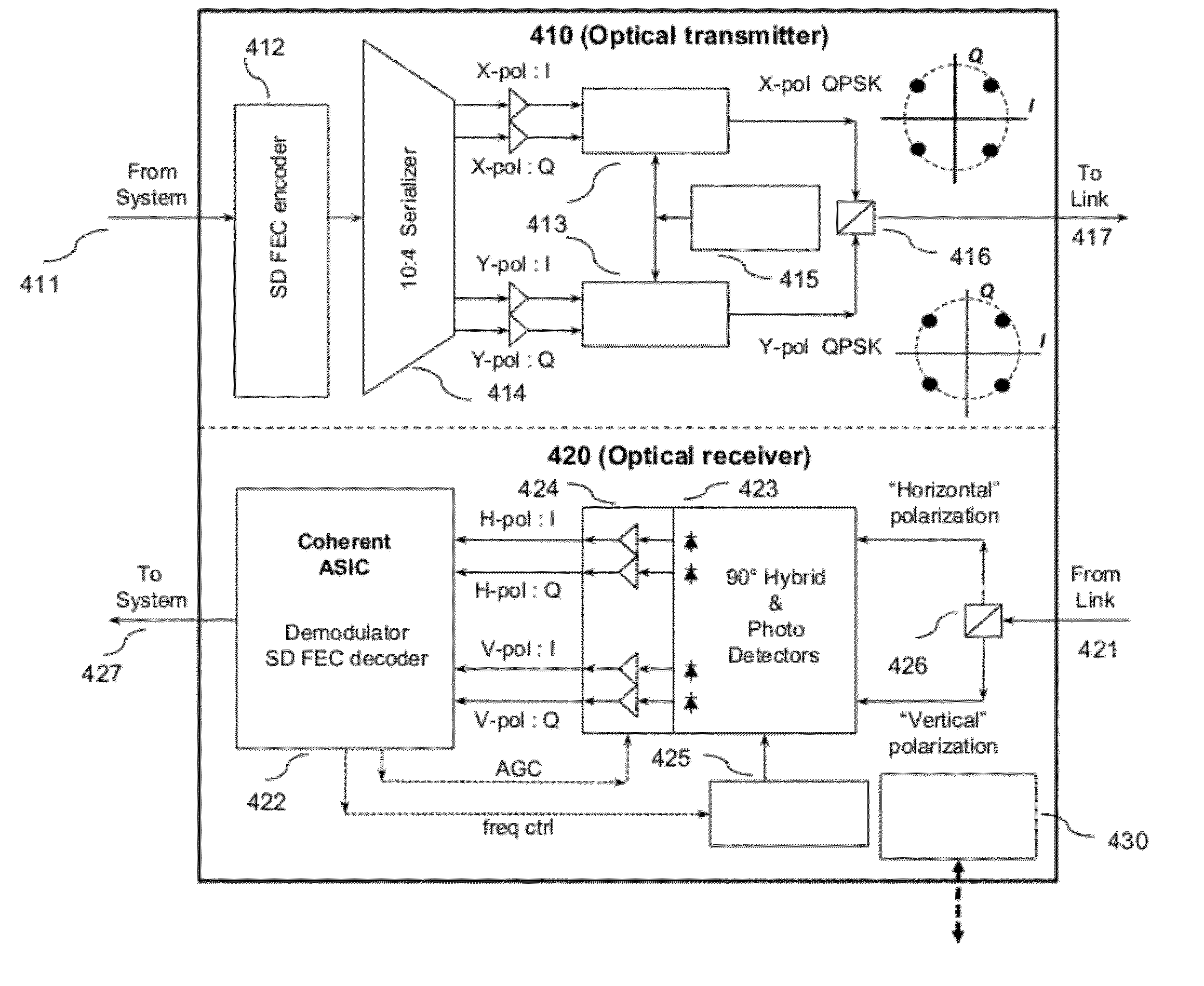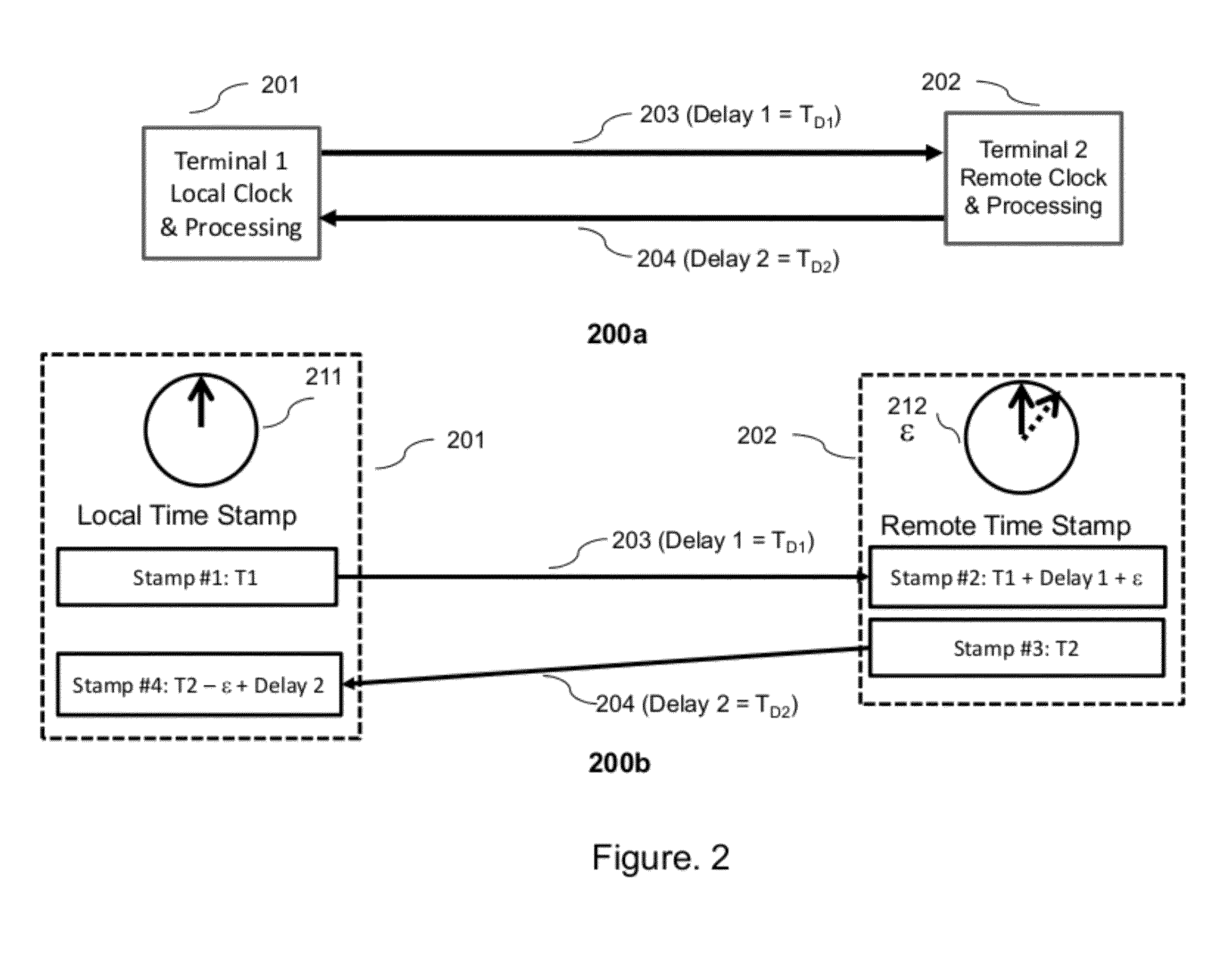Fault Localization and Fiber Security in Optical Transponders
a technology of optical transponders and fiber security, applied in the field of optical transmission systems, can solve the problems of multiple otdrs at additional real-estate, power, maintenance and cost, and inability to easily identify the exact location of the fault,
- Summary
- Abstract
- Description
- Claims
- Application Information
AI Technical Summary
Benefits of technology
Problems solved by technology
Method used
Image
Examples
Embodiment Construction
[0024]Referring once again to FIG. 1, it may be envisioned that there are many installation scenarios for example, local, metropolitan, regional, or long-haul links that may be of interest to system vendors and their end customers who are telecommunication companies, cable operators, data centers, government organizations, etc. The DWDM systems may use a variety of types of fiber (standard, dispersion shifted, Truewave™), different types of amplifiers (single stage, multiple stages with or without mid-stage access, Raman-end pumped systems, etc.), and be unidirectional or bidirectional systems as is known in the art.
[0025]This invention can be applied to any transmission link and will be described in few representative embodiments. The preferred embodiments illustrate a general broad framework of the invention, and the methods outlined here may be applied in different combinations, sub-combinations and modifications in commercial and military networks for applications including, but...
PUM
 Login to View More
Login to View More Abstract
Description
Claims
Application Information
 Login to View More
Login to View More - R&D
- Intellectual Property
- Life Sciences
- Materials
- Tech Scout
- Unparalleled Data Quality
- Higher Quality Content
- 60% Fewer Hallucinations
Browse by: Latest US Patents, China's latest patents, Technical Efficacy Thesaurus, Application Domain, Technology Topic, Popular Technical Reports.
© 2025 PatSnap. All rights reserved.Legal|Privacy policy|Modern Slavery Act Transparency Statement|Sitemap|About US| Contact US: help@patsnap.com



